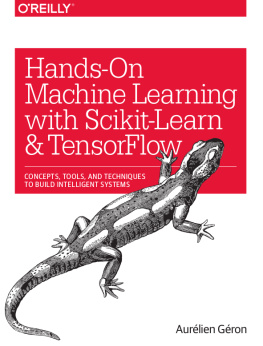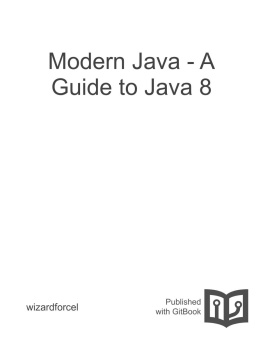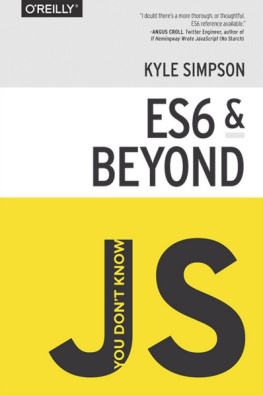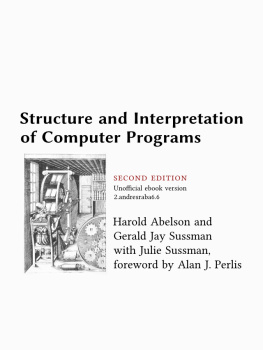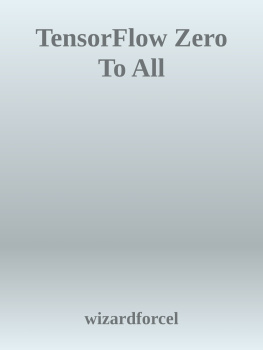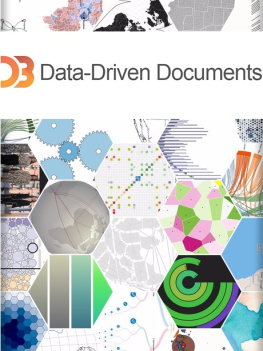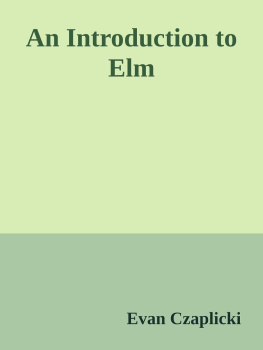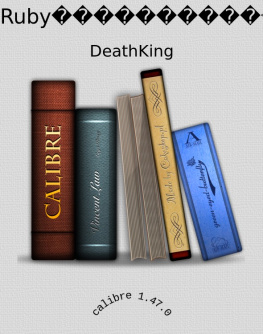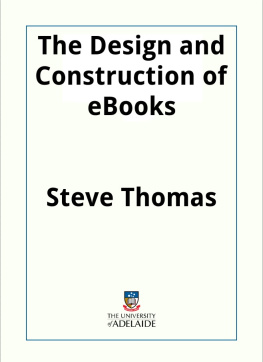it-ebooks - The Great CEO Within
Here you can read online it-ebooks - The Great CEO Within full text of the book (entire story) in english for free. Download pdf and epub, get meaning, cover and reviews about this ebook. year: 2019, publisher: iBooker it-ebooks, genre: Business. Description of the work, (preface) as well as reviews are available. Best literature library LitArk.com created for fans of good reading and offers a wide selection of genres:
Romance novel
Science fiction
Adventure
Detective
Science
History
Home and family
Prose
Art
Politics
Computer
Non-fiction
Religion
Business
Children
Humor
Choose a favorite category and find really read worthwhile books. Enjoy immersion in the world of imagination, feel the emotions of the characters or learn something new for yourself, make an fascinating discovery.

The Great CEO Within: summary, description and annotation
We offer to read an annotation, description, summary or preface (depends on what the author of the book "The Great CEO Within" wrote himself). If you haven't found the necessary information about the book — write in the comments, we will try to find it.
The Great CEO Within — read online for free the complete book (whole text) full work
Below is the text of the book, divided by pages. System saving the place of the last page read, allows you to conveniently read the book "The Great CEO Within" online for free, without having to search again every time where you left off. Put a bookmark, and you can go to the page where you finished reading at any time.
Font size:
Interval:
Bookmark:
The Great CEO Within
(Formerly: Founder to CEO )
How to build a category-killing company from the ground up
By Matt Mochary
Introduction
Essential Reading
Part I -- The Beginning
Chapter 1: Getting Started
Chapter 2: The Team
Part II Individual Habits
Chapter 3: Getting Things Done
Chapter 4: Inbox Zero
Chapter 5: Top Goal
Chapter 6: On Time and Present
Chapter 7: When You Say It Twice, Write It Down
Chapter 8: Gratitude and Appreciation
Chapter 9: Energy Audit and Zone of Geniu
Chapter 10: Health
Part III Group Habits
Chapter 10: Decision-Making
Chapter 11: Loudest Voice in the Room
Chapter 12: Impeccable Agreements and Consequences
Chapter 13: Transparency
Chapter 14: Conflict Resolution and Issue Identification
Chapter 15: Conscious Leadership
Chapter 16: Customer Obsession
Chapter 17: Culture
Part IV Infrastructure
Chapter 18: Company Folder system and Wiki
Chapter 19: Goal-Tracking System
Chapter 20: Areas of Responsibility (AORs)
Chapter 21: No Single Point of Failure
Chapter 22: Key Performance Indicators (KPIs)
Part V Collaboration
Chapter 23: Meetings
Chapter 24: Feedback
Chapter 25: Organizational Structure
Part VI Processes
Chapter 26: Fundraising
Chapter 27: Recruiting
Chapter 28: Sales
Chapter 29: Marketing
Part VII Other Departments
Chapter 30: Executive
Chapter 31: Product
Chapter 32: Engineering
Chapter 33: People
Chapter 34: Finance
Chapter 35: Legal
Part VIII -- Appendices
Appendix A: Common Mistakes
Appendix B: Recommended Recruitment Process
Appendix C: Sample Area of Responsibility (AOR) List
Appendix D: Board of Directors
Appendix E: Further Reading
Appendix F: Personal
About the Author
Acknowledgements
Who am I? Why am I writing this book?
I coach tech startup CEOs (and tech investors) in Silicon Valley, most of whom are young technical founders. They include the CEOs of OpenAI, Coinbase, OpenDoor and AngelList.
In my coaching, I found several things:
- My mentees and I repeatedly solve the same core issues.
- While there are many books out there with excellent and relevant knowledge for the founding CEO, there is no single book that is a compendium of all the things she needs to learn.
- Becoming a great CEO requires training.
- For a founding CEO, there is precious little time to get that training, especially if her company is succeeding.
In this book, I have simply written down the solutions that my mentees and I have came up with. Hopefully it will serve as a compendium so that you can become a great CEO in the very little time you have to do so.
This book goes from high-level (an outline of many of the issues that a CEO will face) to the mid-level (a recommended initial process for each of these issues, written in such a way that it can be copy-and-pasted into a company playbook) to the low-level (specific suggestions of phrases to use in specific oft-recurring situations). The book, therefore, has both breadth and depth.
If you are a CEO, new or experienced, this book is meant for you. If you are a first-time CEO, then this book will give you frameworks and answers for your current and future challenges. If you are an experienced CEO, this book will be a good checklist of best practice benchmarks against which you can rate your companys performance as an organization, and your performance individually. In the areas where you discover that you are wanting, the book will give you the target to hit, and tools to implement immediately.
This book is organized into 8 sections:
- The Beginning
- Individual Habits
- Group Habits
- Infrastructure
- Collaboration
- Processes
- Other Departments
- Appendices
The Beginning briefly covers how best to start a company and launch a team.
Individual Habits covers the most crucial habits to be an effective individual in a company, no matter what your position is. This includes organization (GTD, Inbox Zero) and effectiveness (Top Goal, On Time, Write it Down).
Group Habits covers the most crucial habits to be an effective group, no matter what the groups function or size (Writing vs Talking, Decision-Making, Agreements, Transparency, Conscious Leadership, Customer Obsession and Culture).
Infrastructure covers the tools used to facilitate company effectiveness (Wiki, Goal-Tracking, AORs, KPIs, No Single Point of Failure).
Collaboration reviews techniques used to keep an organization working well together (Meetings, Feedback, Org Structure).
Process covers the systems used for each major function of the company (Fundraising, Recruiting, Sales and Marketing).
Other Departments covers the remaining functions in a company (Executive, Product, Engineering, People, Finance and Legal).
And finally, the Appendices cover a variety of things that didnt neatly fit anywhere else (Essential Reading, Challenge of the Technical CEO, Recruiting Process, Sample AOR List, Board of Directors, IPO, Personal).
There are many ways to create a company, but only one good one: To deeply understand real customers (living humans!) and their problem, and then solve that problem.
This is explained clearly and thoroughly in Disciplined Entrepreneurship by Bill Aulet. I wont repeat or even summarize what he wrote. If you havent yet launched or achieved Product Market Fit (>$1 million of revenue), go read Bills book first.
Starting a company is hard. There are long hours, constant fear of failing, many rejections, etc. This burden is further intensified if you try to do it alone. Solo founders have high rates of burnout. The emotional burden is just too high. As with any trend, there are exceptions. But the rule generally holds.
YCombinator has a strong bias toward accepting co-founder teams (versus solo founders) for this reason. Owning much of something is better than owning 100% of nothing. Find a partner, someone who has complimentary skills to yours. Share the emotional burden with them. That will ease the load significantly. Give up a large percentage of the company. Its worth it.
Your partners purpose is not to be value-add forever. As your company grows, you will likely find people with far greater skills whom you will hire. Thats OK. Your co-founders purpose is to help you achieve success in your march to Product-Market Fit. Once you get there and begin the blitz-scaling process, be pleased if they continue to add value beyond that point.
And when you do find a partner, avoid one cardinal mistake: do not create a 50/50 partnership. While 50/50 sounds like an ideal, it actually leads to real pain if there is no easy way to break a deadlock. Unanimous decisions are tiresome to create day after day after day. Knowing that one person has the ability to decide actually eases the burden for all involved, and leads to far better outcomes.
As Alex MacCaw, Founder and CEO of Clearbit writes: This is key. Two of my previous companies were destroyed by a 50/50 split.
From Peter Reinhardt, Founder and CEO of Segment , shares a different perspective: T here are ways to avoid deadlock (e.g. third co-founder with small stake a la Charm), and splitting evenly aside from that has been totally fine in my experience with both Segment and Charm. Over time, vesting, cash investment, or differential compensation is a natural way that ownership can diverge.
Next pageFont size:
Interval:
Bookmark:
Similar books «The Great CEO Within»
Look at similar books to The Great CEO Within. We have selected literature similar in name and meaning in the hope of providing readers with more options to find new, interesting, not yet read works.
Discussion, reviews of the book The Great CEO Within and just readers' own opinions. Leave your comments, write what you think about the work, its meaning or the main characters. Specify what exactly you liked and what you didn't like, and why you think so.




